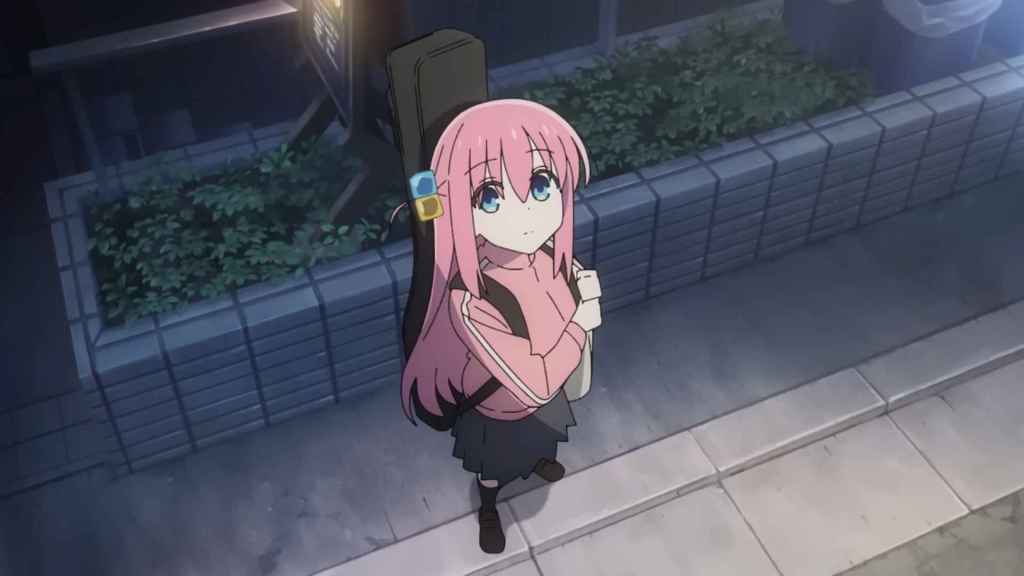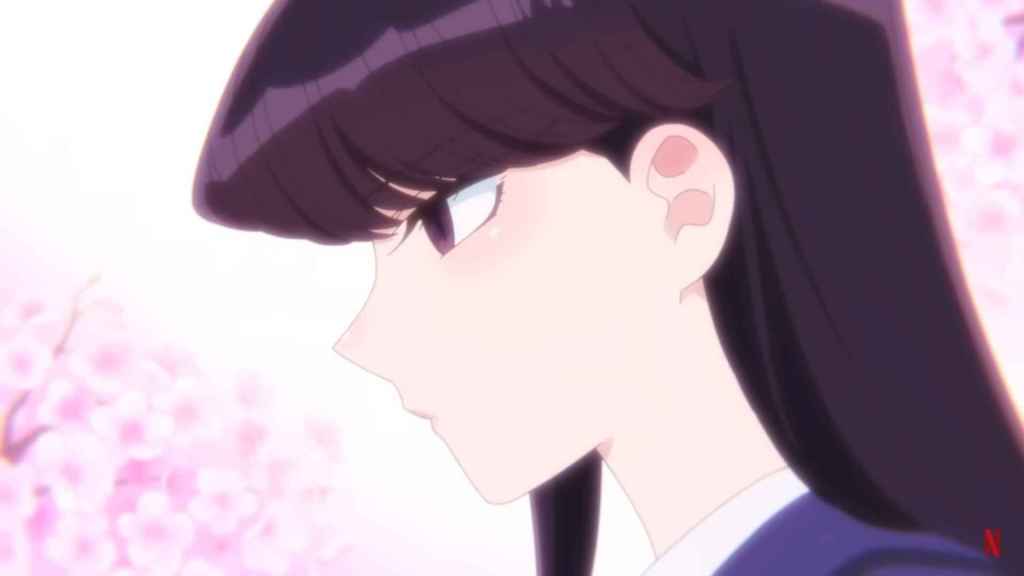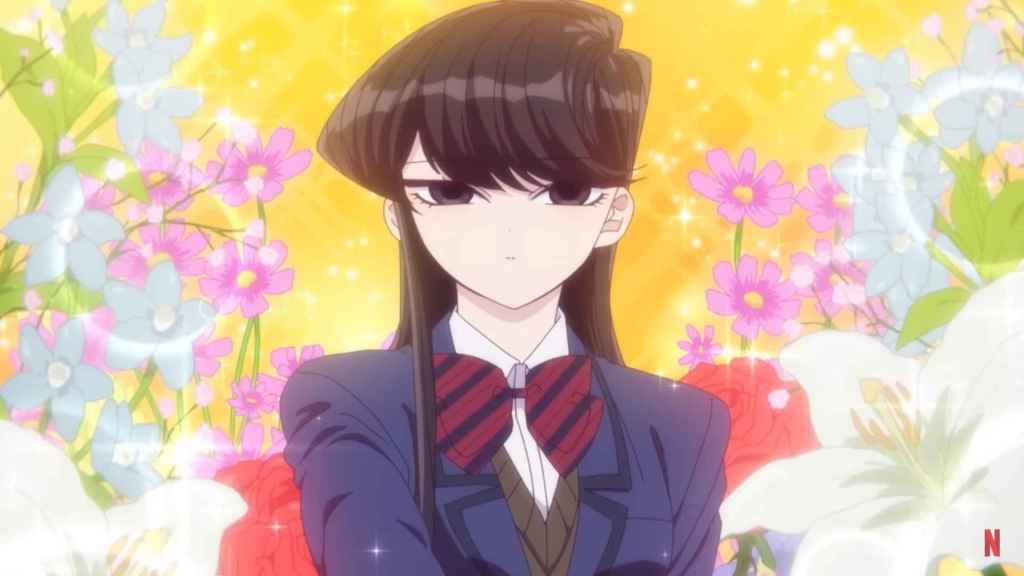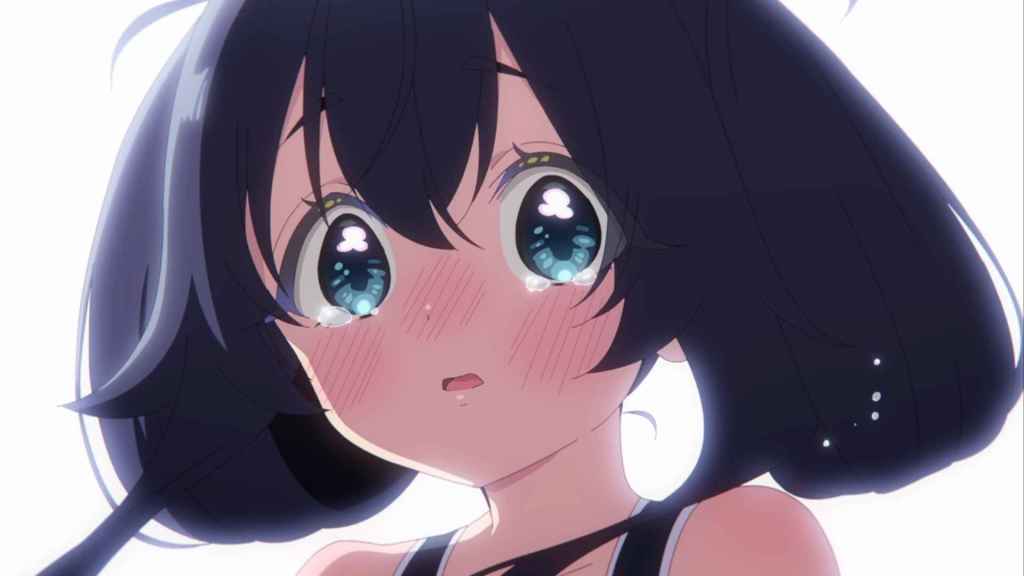Just the other day, I caught up to Aijou Rentarou’s hijinks in The 100 Girlfriends Who Really Really Really Really Really Love You. Wow! That’s a mouthful, but also I can attest this is one of the funniest anime they put out this year.
One thing that I noticed is how Shizuka-chan, the small and quiet girl, manages to get herself stuck on an island in a pool. Her floaties got ripped, her phone’s battery just gave up on her, thus she is effectively a maiden in need of rescue.
When she finally spots Rentarou, she lets out maybe the softest and smallest “Hey!” I’ve ever heard in my life. But somehow, Rentarou hears her like he is some kind of bat with echolocation, which is hysterical.
For context, Shizuka always communicates with her phone via a text-to-speech feature, where it reads her favorite book. She is shy and rather insecure about her soft voice. So, she decided it is better for her to communicate by quoting her book.
Shizuka’s shyness got me thinking. Hmm, there are plenty of girls in anime that could’ve used a text-to-speech feature like her. Last year we got Bocchi The Rock!, 2021 gave us Komi-san. Heck, even this season, we got an anime with the word “SHY” as the title.
So, is the quiet girl trope just another character template in anime? Or, maybe we do have a lot of them, and most are very well written.
Why Quiet Girls In Anime Are Popular

The quiet girl trope is among the most used tropes in anime. Considering how many quiet girls we have in anime, there have to be some reasons for them to exist for so long.
First, quiet girls are relatable. It’s not hard to find someone who would get bashful when meeting their crush. For some people, finding a bashful or reserved character in an anime is a “Hey! It’s me!” moment.
Second, it’s their introverted nature. Especially in romance anime, introverted girls who keep to themselves do have their own mysterious vibes. And sometimes, that’s the very thing the main character or the audience is attracted to. What’s more interesting is that some anime gives an idea on how introversion and issues surrounding it actually work.
And the final reason, when it feels great to see them breaking out from the shell for the first time. The more wholesome example would be the anime Hitoribocchi no Marumaru Seikatsu. In this anime, the main character, Hitori Bocchi, makes her way to finally open up and make new friends despite her internal struggles.
The Quiet Girl Is Relatable And Anime Community Is Full Of Introverts

Let’s break down the reasons above one by one. First, the relatability of the quiet girl trope among fans. Surprisingly, but not really, most anime fans are introverts. Or at least, there is a ten years old study that indicates introverts love talking about anime on social media.
Although the study is old, I believe it still holds some truth. There are introverts, such as Frieren, among the most popular female anime characters at the time of writing this post. This supports the idea that the quiet girl trope is highly popular and that there are many introverts among anime fans.
The Beautiful And Mysterious Girl Type

What’s more interesting is sometimes this trope also hits the less discussed side of being an attractive girl and being an introvert. Most people would assume that, as long as you’re attractive, there’s virtually no obstacle for you to make social connections.
However, this is can’t be much farther from the truth. Komi-san from Komi Can’t Communicate really shows how being attractive doesn’t always correlate with being sociable. Right at the first few second of the beginning of the anime, Komi is already turning heads because of her beauty. But, she still struggles to make friends with others.
What I was worried about her character when I watch this anime for the first time is how people will only see her as a pretty face. Yes, being attractive gives an advantage when it comes to attracting attention. But, what’s good about a heap of attention when there’s lack of genuine interaction.
The horror of this situation comes when all that people is only the shell of the person, not what’s inside. It can be genuinely isolating when people reduce yourself into just how you look like, even when you’re good looking. There is an interesting stream by Dr. Kanojia, or Dr. K, on YouTube talking about this exact problem.
What About The Invisible Quiet Girls?
The issue can be more severe when the quiet and reserved character isn’t traditionally attractive. I think it’s also true in real life. There’s a certain line where a person can turn from being “cool” to “creepy” in how society perceive attractiveness.
In real life, the effects of forcing oneself into becoming the exact copy of the ideal expectation can be severe. Women are particularly prone to eating disorders while conforming to what perceived as attractive by society.
Also, I think the problem of turning invisible for unattractive introverts is universal for both men and women. For example, Kaguya-sama: Love is War jokingly makes a reference of Ishigami’s appearance in the anime. He actually is a member of the student council, but he is always overlooked until his official appearance in the middle of the first season.
What’s more terrifying is that sometimes being the unattractive quiet girl can lead to a character with a skewed viewpoint on life. It’s what happens in WataMote. The main character, Tomoko Kuroki, is somewhat similar with Komi-san, but she is not as traditionally attractive.
I’m sure there are many introverts who are struggling to be seen by their peers. And to some extent, it can be attributed to the attractiveness of the person. When an anime puts a spotlight on this type of character, it showcases the experience of the average person at the same time.
The inclusion of these issues can prevent the quiet girl trope from being too one-dimensional. Potential conflicts that arise when variables like bias on attractiveness are introduced give the characters something to either fight against or to accept.
Exploring Introversion, Two Kinds Of Quiet Girls

The quiet girl trope obviously tackles down how introversion and social anxiety work. While the two can correlate, they don’t always mean the same thing. The best example showing the contrast between the two might be that one scene from Bocchi The Rock!
Bocchi, at some point, realizes that her bandmate, Ryo-senpai, is actually voluntarily put herself as a loner. Why? Because she prefers to do things like that. Ryo-senpai is just built different.
In reality, introversion exists on a spectrum. One introvert is completely unique from the other. Although there are some similarities, just like how both Ryo and Bocchi avoid social interactions, their reasons could be totally different.
While the two are introverts, one willingly plunges herself into her own bubble of isolation, while the other is torn apart by her neurotic perception of the outside world. I think this is where the quiet girl trope shines the most. While it gives the idea of a generic template of a reserved person, it has so many options to make itself specific.
More Than Introversion, The Quiet Girl Trope Explores Social Anxiety
If we dive more deeply into this trope, it explores more than just introversion. Both Ryo and Bocchi are introverts, but the latter certainly has an issue. While being an introvert is totally fine, things can easily go south when a character has a social anxiety.
While an extreme example like Shizuka might give an idea how social anxiety might seem from the outside. I think Bocchi perfectly shows how people with this problem process interaction internally.
There are so many scenes of Bocchi freaking out on the idea of performing on stage, being replaced by a more extroverted guitarist, or ended up as a hikikomori at the most extreme. The anime expresses her worries in the most creative way possible.
From Bocchi glitching out, exploding like a balloon when some random guys try to interact with her, to her transforming into a low-poly figure being thrown against a wall. This is the imagery that I want to see when there is a quiet and anxious character.
I would really love if there are more anime that give the idea what’s actually going on inside the head of quiet characters. While anxiety can seriously twist how we perceive the world, Bocchi’s portrayal of her internal struggles gives the quiet girl trope a clearer visual description.
Rooting For Characters With Internal Struggles

Watching a quiet girl character slowly overcomes her shyness and self-isolation can actually be inspiring. When it comes to romance, it’s mostly the norm for the guy to make the first move. When a girl does it, it’s sometimes seen as groundbreaking.
However, the real groundbreaking thing is actually when a quiet character is the one who initiates a romantic confession. Why is that the case? Well, first she has to be brave enough to put herself into the possibility of being rejected.
Second, when it comes to quiet girls, their problems essentially are doubled. Her own personality gets in her way to get what she wants. Not only she has to do an unconventional thing, but she also has to conquer her own reserved nature. When the quiet girl trope takes this route, it places the character into a “conquering the dragon” situation, with their inner conflicts being the dragon.
Yes, I am aware that this sounds like a shonen protagonist moment. But, I think conveying internal struggles is forever an important aspect of storytelling, no matter what the media is. Furthermore, the quiet girl trope is arguably just the perfect outlet to show internal conflicts.
Hilarious Comedy Subversion
Okay, now we know that the quiet girl character trope can cover serious issues, like pretty privilege and social anxiety. But, this trope isn’t limited to highly reflective situations and social issue. When done right, the quiet girl can be the most out of pocket comedic factory.
The ultimate example of this would be Mai from Nichijou in my opinion. If the anime weren’t a comedy, she would be the generic studious character out of the trio. Or, maybe she will be similar to Ryo from Bocchi The Rock!
Mai is such a deceptive character in my opinion. She has the stereotypical quiet and smart student appearance, with glasses and an expressionless face. The first time I watched Nichijou, I thought she would be the common sense of the trio. But no, turns out she always has the most chaotic pranks, and she does them in a very elaborate way too.
On top of that, she mostly does these pranks without even uttering a word. I don’t know what the original mangaka of Nichijou was drinking while they were writing Mai’s antiques, but what she does sometimes are just unthinkable.
I think it was a genius choice to put Mai as the prankster as the trio. Her quiet personality combined with her trolls are two things that commonly sit at the opposite end. It diverts us from the initial expectation we might have at first. Furthermore, we already have Yuuko as the designated foolish character. So, putting Mai on a level that’s makes even Yuuko perplexed is such a comedic genius.
Will The Quiet Girl Trope Continue To Be Interesting?

I think there is so much room to explore in the quiet girl trope. So far, I only provided a handful of examples in a few genres. We haven’t even dive deeply into the romance genre and sub-plot, where the quiet girl trope will almost always appear.
Also, the trope is arguably pretty flexible to be present in various genres. It opens up the possibility of having a serious depiction of social problems, ranging from anti-social behavior to women specific issues.
By including these topics into the character, we will see more diversity of personality and less one dimensional female characters in the anime, despite they come from the same quiet girl trope. All things considered, the quiet girl trope is a timeless trope for prevalent reasons in storytelling that can’t be ignored.


Leave a comment